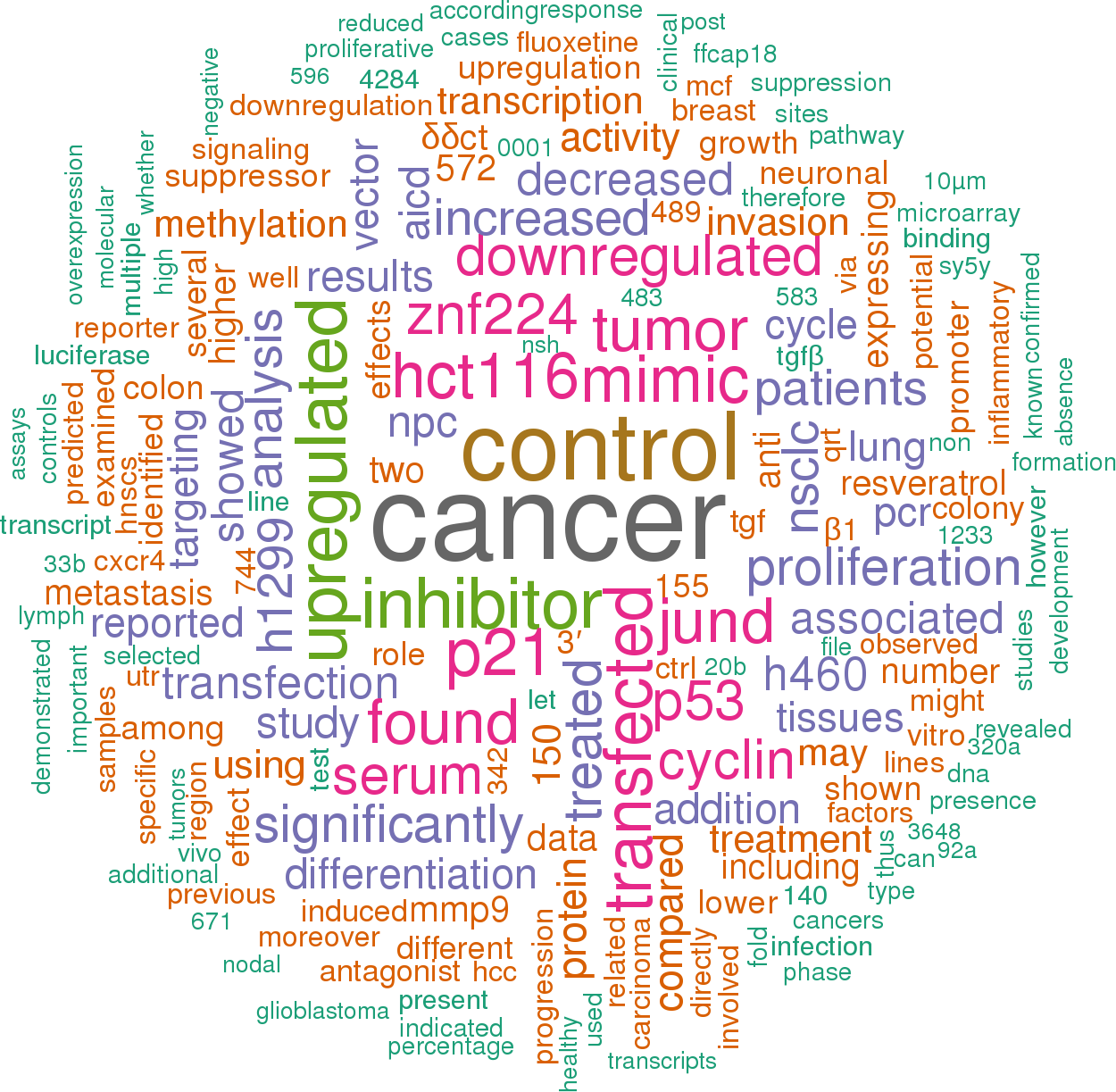Accession
MI0003672
Symbol
HGNC:
MIR663A
Description
Homo sapiens
hsa-mir-663a precursor miRNA mir-663
Gene
family?
family?
RF00957;
mir-663
Summary
Caution, this is an AI generated summary based on literature. This may have errors. ?
MIR663A is a microRNA that plays a role in suppressing colorectal cancer (CC) metastasis [PMC6365692]. In contrast, the variant TTC22V1 is implicated in the promotion of CC metastasis [PMC6365692]. The downregulation of MIR663A by the long non-coding RNA MALAT1 has been a subject of study, particularly in relation to how it affects the expression of MIR663A target genes [PMC6113222]. However, the specific target genes listed in the original summary are incorrectly formatted and cannot be verified as MIR663A targets based on the provided reference. Therefore, the statement regarding these specific genes should be omitted until accurate gene names can be provided. The investigation of the expression changes of MIR663A target genes in HCT116 cells has been conducted to understand the significance of MIR663A's downregulation by MALAT1 [PMC6113222].
Literature search

75 open access papers mention hsa-mir-663a
(535 sentences)
(535 sentences)
Sequence
1031
reads,
13
reads per million, 74 experiments
ccuuccggcgucccAGGCGGGGCGCCGCGGGACCGCccucgugucuguggcggugggaucccgcggccguguuuuccugguggcccggccaug
....((((.((((((((.((.(((((((((((((((((........).))))).....)))))))).))).))..))))).))))))).....
....((((.((((((((.((.(((((((((((((((((........).))))).....)))))))).))).))..))))).))))))).....
Structure
-ccuu c - -C G - ----- - ucg
ccgg guc ccAGG GG GCG CCGCGGGA CCGCc c u
|||| ||| ||||| || ||| |||||||| ||||| |
ggcc cgg ggucc uu ugc ggcgcccu ggcgg g g
guacc - u uu g c agggu u ucu
Annotation confidence
Low
Do you think this miRNA is real?
Genome context
chr20: 26208186-26208278 [-]
Disease association
hsa-mir-663a is associated with one or more human diseases in the Human microRNA Disease Database
| Disease | Description | Category | PubMed ID |
|---|
Mature hsa-miR-663a
| Accession | MIMAT0003326 |
| Description | Homo sapiens hsa-miR-663a mature miRNA |
| Sequence | 15 - AGGCGGGGCGCCGCGGGACCGC - 36 |
| Evidence |
experimental
SAGE [1] |
| Database links |



|
| Predicted targets |



|
References
|



